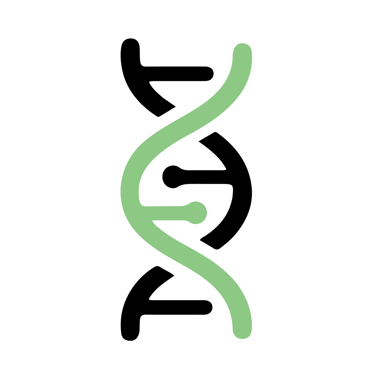NMN + TMG: The Longevity Power Pair
Dive into the fascinating world of cellular health with this breakdown of NMN and TMG. We'll explore why leading longevity researcher Dr. David Sinclair takes this supplement pair daily, uncovering the science behind how they work together to boost your body's energy and support healthy aging. It's a quick, easy-to-understand guide to a powerful longevity strategy.
Sam Kim
8/18/20252 min read


I once heard an interview with Dr. David Sinclair, a renowned geneticist and professor at Harvard Medical School, on what types of supplements he takes daily. As a leading voice in the field of aging research, he has openly discussed his personal regimen, which famously includes both NMN (nicotinamide mononucleotide) and TMG (trimethylglycine).1 The reason he takes them together is a fascinating lesson in cellular chemistry.
The Dynamic Duo: NMN and TMG
To understand why this pair is so popular, you first have to meet NAD+ (nicotinamide adenine dinucleotide). Think of NAD+ as your body's cellular currency; it’s a critical coenzyme found in every cell.2 NAD+ plays a vital role in two key areas:
Energy Metabolism: It helps convert the food you eat into the energy your body needs to function.
Cellular Repair: It is essential for activating a family of proteins called sirtuins, which are often called "longevity genes" because they help protect DNA and regulate cellular health as you age.
As we get older, our natural levels of NAD+ decline significantly, which is linked to many age-related health issues.5 This is where NMN comes in. Research shows that NMN is a powerful precursor to NAD+; in other words, it is a building block that the body uses to create more NAD+¹, thereby supporting energy and cellular repair.
So if NMN is so great, why take TMG? The process of creating and using NAD+ from supplements like NMN places a demand on a critical bodily function called the methylation cycle. This cycle is responsible for a variety of essential processes, including DNA repair and detoxification, and it relies on a supply of compounds called methyl groups. When your body works to convert NMN into NAD+, it can consume a lot of these methyl groups, potentially creating a shortage².
This is where TMG (trimethylglycine) acts as a clever partner. TMG is an excellent methyl donor, meaning it can provide the body with the methyl groups it needs to keep the methylation cycle running smoothly³.7 By taking TMG with NMN, you ensure your body has the resources to support both your NAD+ levels and your overall cellular health, making the whole process more effective and sustainable.
It’s a perfect example of a nuanced, research-backed approach to supplementation—not just a single compound, but a strategic combination to support your body's complex biological systems.
Don't take my word for it. Please follow up on the findings:
"NMN reverses D-galactose-induced neurodegeneration and enhances the intestinal barrier of mice by activating the Sirt1 pathway" - Frontiers in Pharmacology. A study demonstrating how NMN supplementation can improve cognitive function and gut health in aging models by increasing NAD+ and activating the Sirt1 pathway.
"NMN with TMG: Benefits, Dosage and Risks" - Jinfiniti. An article that breaks down the relationship between NMN and the methylation cycle, explaining why supplementing with a methyl donor like TMG can be beneficial when taking NMN to avoid methyl group depletion.
"Betaine in human nutrition" - The American Journal of Clinical Nutrition. A comprehensive review paper on the role of betaine (TMG) in human health, detailing its primary functions as an osmolyte and a methyl donor.
Links to supplements:
NMN:
NMNH (Dihydronicotinamide Mononucleotide), 1000mg Per Serving
NMNH (Dihydronicotinamide Mononucleotide), 500mg per Serving
TMG:
© 2025. All rights reserved.
